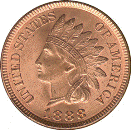Business, College of

Department of Economics: Faculty Publications
Document Type
Article
Date of this Version
August 2006
Abstract
This paper presents an autoregressive fractionally integrated moving-average (ARFIMA) model of nominal exchange rates and compares its forecasting capability with the monetary structural models and the random walk model. Monthly observations are used for Canada, France, Germany, Italy, Japan, and the United Kingdom for the period of April 1973 through December 1998. The estimation method is Sowell’s (1992) exact maximum likelihood estimation. The forecasting accuracy of the long-memory model is formally compared to the random walk and the monetary models, using the recently developed Harvey, Leybourne, and Newbold (1997) test statistics. The results show that the long memory model is more efficient than the random walk model in steps-ahead forecasts beyond 1 month for most currencies and more efficient than the monetary models in multi-step-ahead forecasts. This new finding strongly suggests that the long-memory model of nominal exchange rates be studied as a viable alternative to the conventional models.


Comments
Published in Journal of Forecasting 25 (2006), pp. 369–380; doi 10.1002/for.994. Copyright © 2006 John Wiley & Sons, Ltd. http://www.interscience.wiley.com Used by permission.